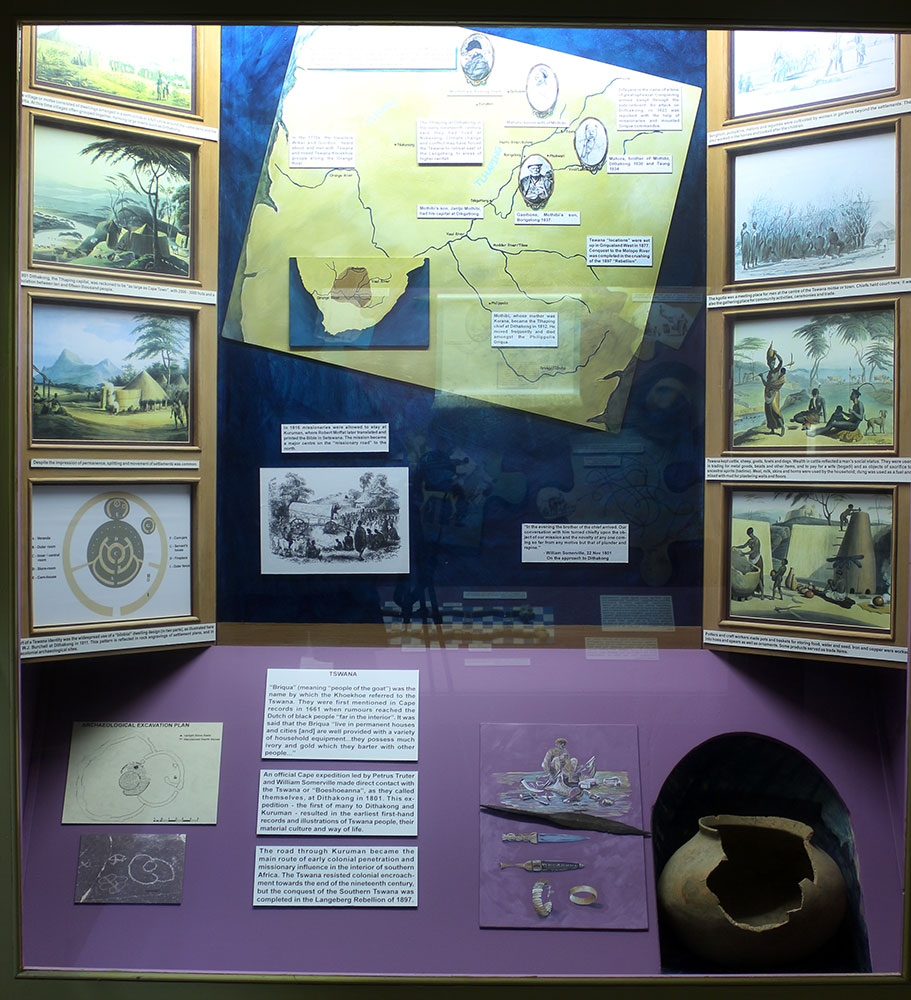Tswana
- Tswana
- https://museumsnc.co.za/new_site/wp-content/uploads/2021/04/tswana-thumb.jpg
- ALL CATEGORIES
- https://museumsnc.co.za/new_site/wp-content/uploads/2021/04/Tswana-Voiceover.mp3
SeTswana-speaking communities lived in large towns in the north-eastern part of the Northern Cape. They were farmers, practising both agriculture and pastoralism. Eighteenth century records indicate seasonal trading expeditions by Tswana as far westwards as Augrabies, west of modern Upington.
“Briqua” (meaning “people of the goat”) was the name by which the Khoikhoi referred to the Tswana. They were first mentioned in Cape records in 1661 when rumours reached the Dutch, of black people “far in the interior”. It was said that the Briqua “live in permanent houses and cities [and] are well provided with a variety of household equipment…they possess much ivory and gold which they barter with other people…”
An official Cape expedition led by Petrus Truter and William Somerville made direct contact with the Tswana at Dithakong in 1801. Dithakong, the Tlhaping Tswana capital, was reckoned to be “as large as Cape Town”, with 2000 – 3000 huts and a population between ten and fifteen thousand people.
William Somerville reported a meeting with “the brother of the chief” on their approach to Dithakong in Nov 1801: As he wrote: “Our conversation with him turned chiefly upon the object of our mission, and the novelty of anyone coming so far from any motive but that of plunder and rapine.”
The road through Kuruman became the main route of early colonial penetration and missionary influence in the interior of southern Africa. In 1816 missionaries were allowed to stay at Kuruman, where Robert Moffat later translated and printed the Bible in Setswana.
Difaqane is the name of a time of great upheaval. Conquering armies of displaced and warring Africans swept through the subcontinent. An attack on Dithakong in 1823 was repulsed, with the help of missionaries and mounted Griqua commandos.
The Tswana resisted colonial encroachment towards the end of the nineteenth century, but the conquest of the Southern Tswana was advanced by establishment of “locations” in Griqualand West in 1877, and completed in the crushing of the Langeberg Rebellion of 1897.

